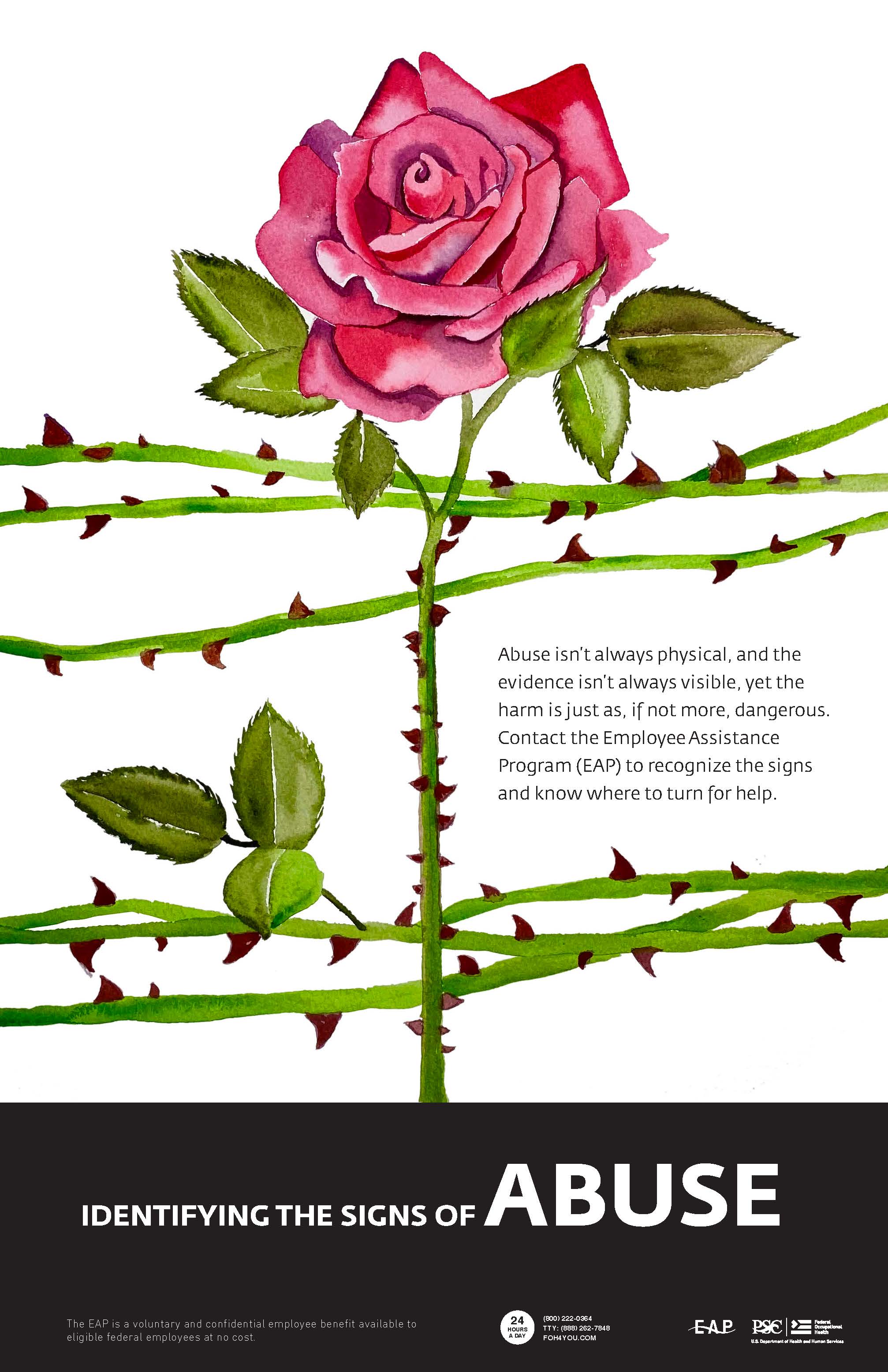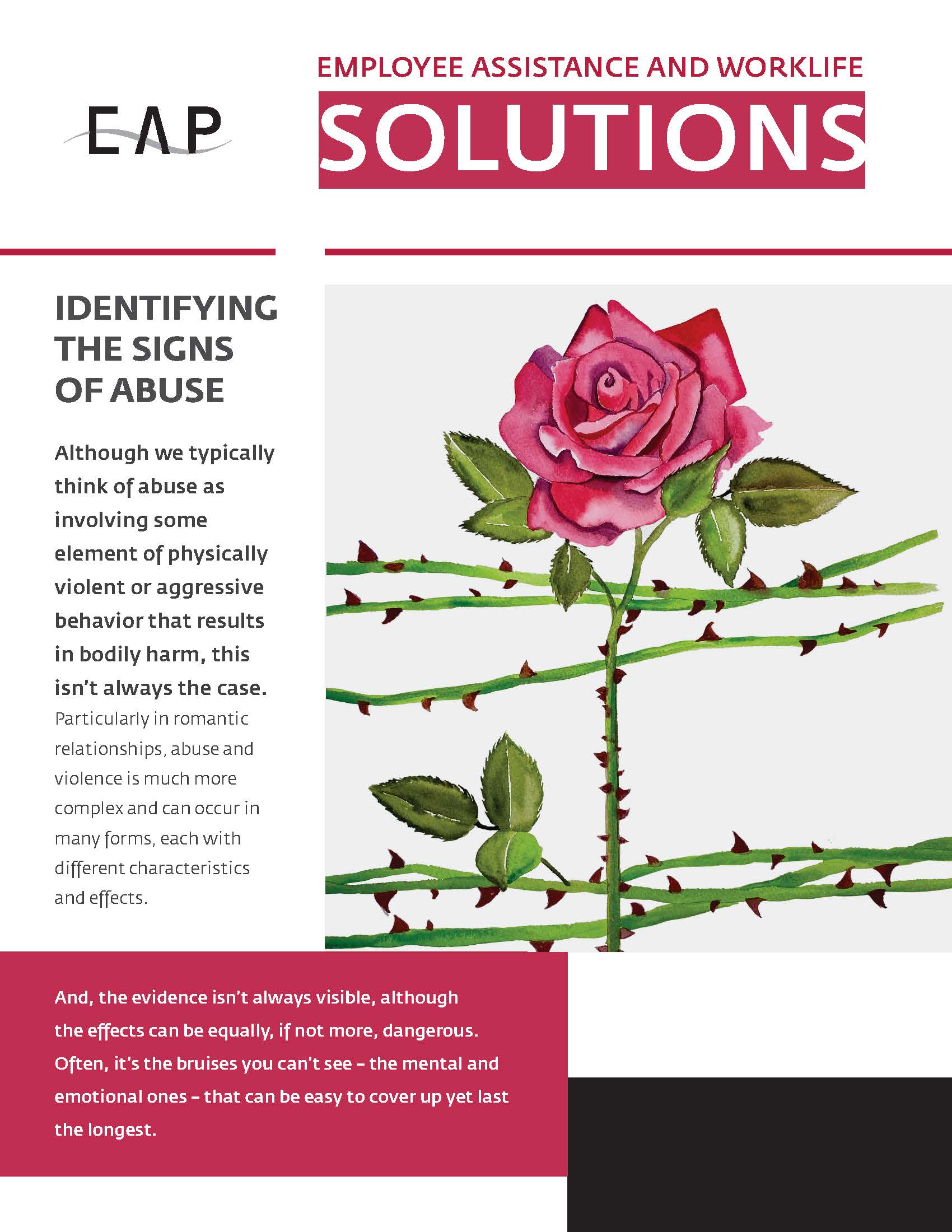
Although we typically think of abuse as involving some element of physically violent or aggressive behavior that results in bodily harm, this isn’t always the case. Particularly in romantic relationships, abuse and violence is much more complex and can occur in many forms, each with different characteristics and effects. And, the evidence isn’t always visible, although the effects can be equally, if not more, dangerous. Often, it’s the bruises you can’t see — the mental and emotional ones — that can be easy to cover up yet last the longest.
Intimate partner violence (IPV)
Once referred to as domestic violence, IPV is multi-layered and is defined as abuse, violence, aggression, or coercive behavior that occurs in any intimate relationship. An intimate partner is any current or former spouse, dating partner, or ongoing sexual partner.
Although equally frustrated and inconvenienced, an emotionally self-aware passenger realizes that it’s not the gate agents’ fault that the flight was cancelled and that no amount of status can change the fact that the plane isn’t going anywhere. They may wait calmly to speak with someone or use their phone to begin finding alternate options. They also have the capacity to acknowledge something positive, such as being grateful for the extra time they now have to get something to eat.
Types and traits of abuse
Within IPV are several subsets or types of abuse, and below are some examples of each. For a more thorough list, visit: The Hotline.org – Types of Abuse
Physical: Any contact intended to cause a partner fear, pain, injury, bodily harm, or other physical suffering.
Examples include attempting to physically injure you, your children, or pets; throwing objects at you; preventing you from seeing a doctor or calling emergency services; or trapping you inside your home are all examples of physical abuse.
Emotional/verbal: Using behaviors or words to manipulate, humiliate, threaten, intimidate, or impart fear to gain/maintain power and control over a partner.
This type of abuse often coexists with other forms of abuse and is the most difficult to recognize. It can involve insulting, embarrassing, or belittling you; threatening to leave you or to have your children taken away from you; destroying your belongings; controlling who you see, contact, or spend time with; hiding your keys or wallet; or giving you the silent treatment, blaming you for their abusive behavior, or gaslighting you.
Sexual: Initiating any sexual activity with a partner in the absence of their consent, either by physical force, verbal pressure, or intimidation.
This includes continuing to pressure you after you say no, making you fear what will happen if you say no, or reacting with sadness, anger, or resentment if you don’t immediately agree; giving you drugs or alcohol to “loosen up” your inhibitions; demanding sex to “prove your love” or implying that you owe them something sexually in exchange for previous actions, gifts, or allowances.
Note: These apply even if you are married to or are in a committed relationship with the abuser.
Reproductive coercion: Taking away a partner’s ability to control their own reproductive system.
This can involve lying about using or refusing to use birth control; hiding, disposing of, or tampering with birth control devices or methods, or withholding money to purchase contraception; monitoring your menstrual cycles; or threatening you or becoming violent if you don’t agree to end or continue a pregnancy.
Financial: Controlling a partner's access to economic resources.
Some examples include providing an allowance and closely monitoring how you spend it, including demanding receipts for purchases; living in your home but refusing to work or contribute to the household; withholding money for necessary or shared expenses; preventing you from working, limiting the hours you can work, getting you fired, or forcing you to work certain types of jobs; preventing you from viewing or accessing bank accounts; or maxing out your credit cards, not paying credit card bills, or otherwise harming your credit score.
Digital: Using technology or social media to bully, harass, stalk, or intimidate. This behavior is often a form of verbal or emotional abuse conducted online.
This could be telling you who you can or can’t follow or be friends with on social media; posting intimate photos or videos without your permission; constantly texting you and becoming angry if you don’t immediately respond; using social media, smart home devices (like speakers and cameras), spyware, or GPS to track your movements and communications; or sending, requesting, or pressuring you to send explicit photos, videos, or sexts.
Stalking: Watching, following, or harassing a partner repeatedly, making them feel afraid and/or unsafe.
Such behavior may involve showing up at your home or workplace unannounced/uninvited; waiting around at places you frequent; leaving you unwanted items, gifts, or flowers; damaging your home, car, or other property; or hiring a private investigator to follow or find you to spy on your location or movements.
Seeking support for yourself or others
If you are in an abusive relationship, remember that it’s not your fault and that everyone is worthy of a safe and healthy relationship. Also know that no matter how difficult escaping your abuser may seem, it’s not impossible. Because reaching out for support or finding help to escape can be frightening, especially if you’re isolated or can’t talk with others safely or privately, websites like the ones listed below provide several contact options.
Supporting an abused loved one, friend, or coworker starts with educating yourself about the warning signs and being there to offer compassionate, non-judgmental support. Coming from a place of care and starting a conversation with the person can open a crack in the door and bring awareness to the situation. Then just listen, even if what they’re saying is that they don’t want to talk about it or want your help. You may not understand why or how someone can stay in an abusive relationship — the reasons are countless, and escaping can be dangerous — but acknowledging that it just isn’t that simple is a good place to start.
If you recognize your own behavior in some of the examples in this newsletter, know that you have the ability to change if you’re willing. Unlearning certain behaviors can be challenging, but it is possible if you make an intentional commitment to transforming your attitudes and actions.
Helpful resources
National Domestic Violence Hotline
1-800-799-7233 (SAFE)
For the abused: thehotline.org/get-help
For abusive partners: thehotline.org/support-others/help-for-abusive-behaviors
National Coalition Against Domestic Violence (NCADV)
ncadv.org/resources
Download the Campaign
|
Poster |
PDF Newsletter |
Plain Text Newsletter |
|
For more information on warning signs and getting help for you or someone else, visit the websites below. The Employee Assistance Program (EAP) also provides confidential support 24 hours a day, seven days a week, and even on holidays. 24 HOURS A DAY
The EAP is a voluntary and confidential employee benefit available to eligible federal employees at no cost. |



